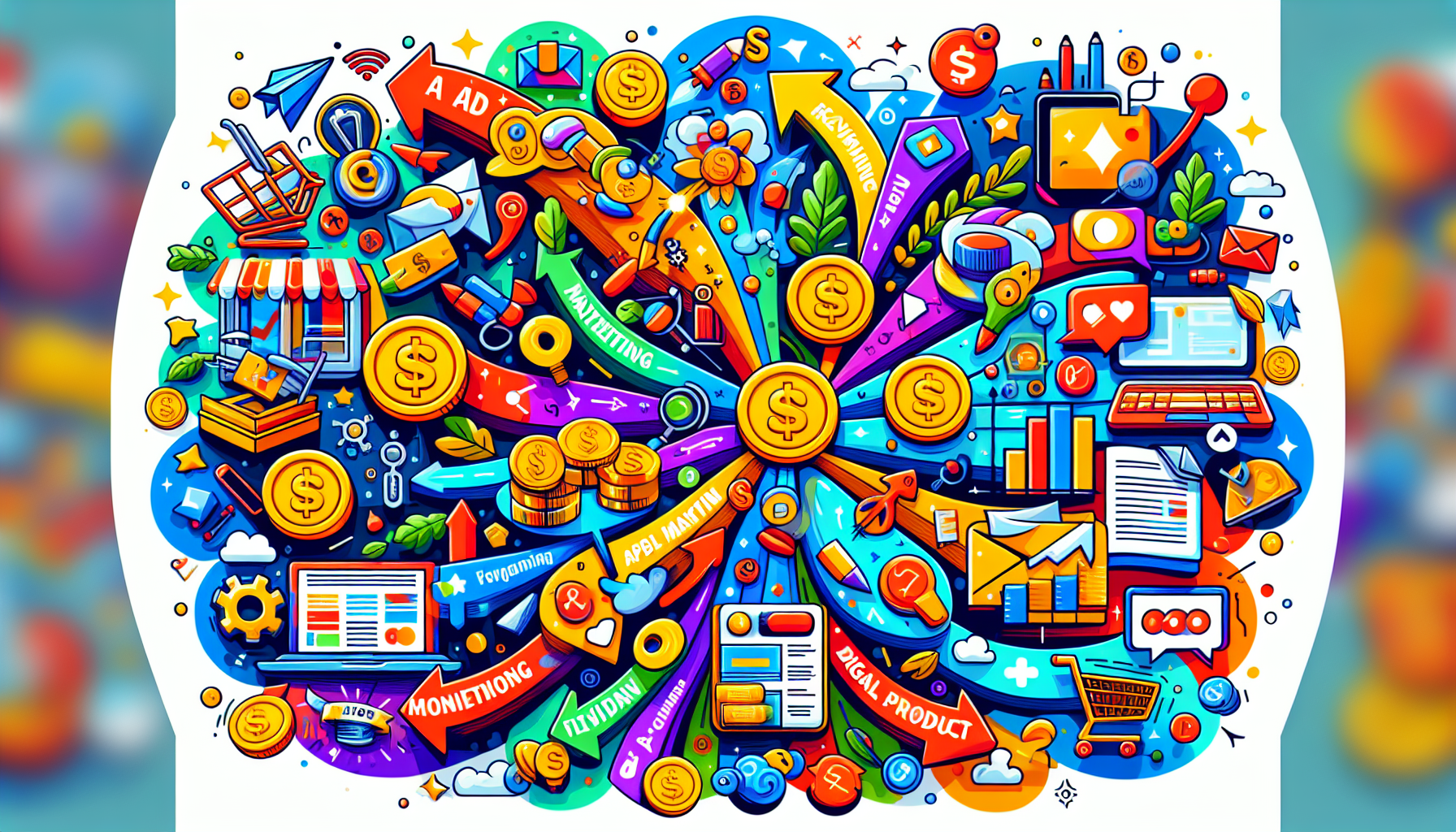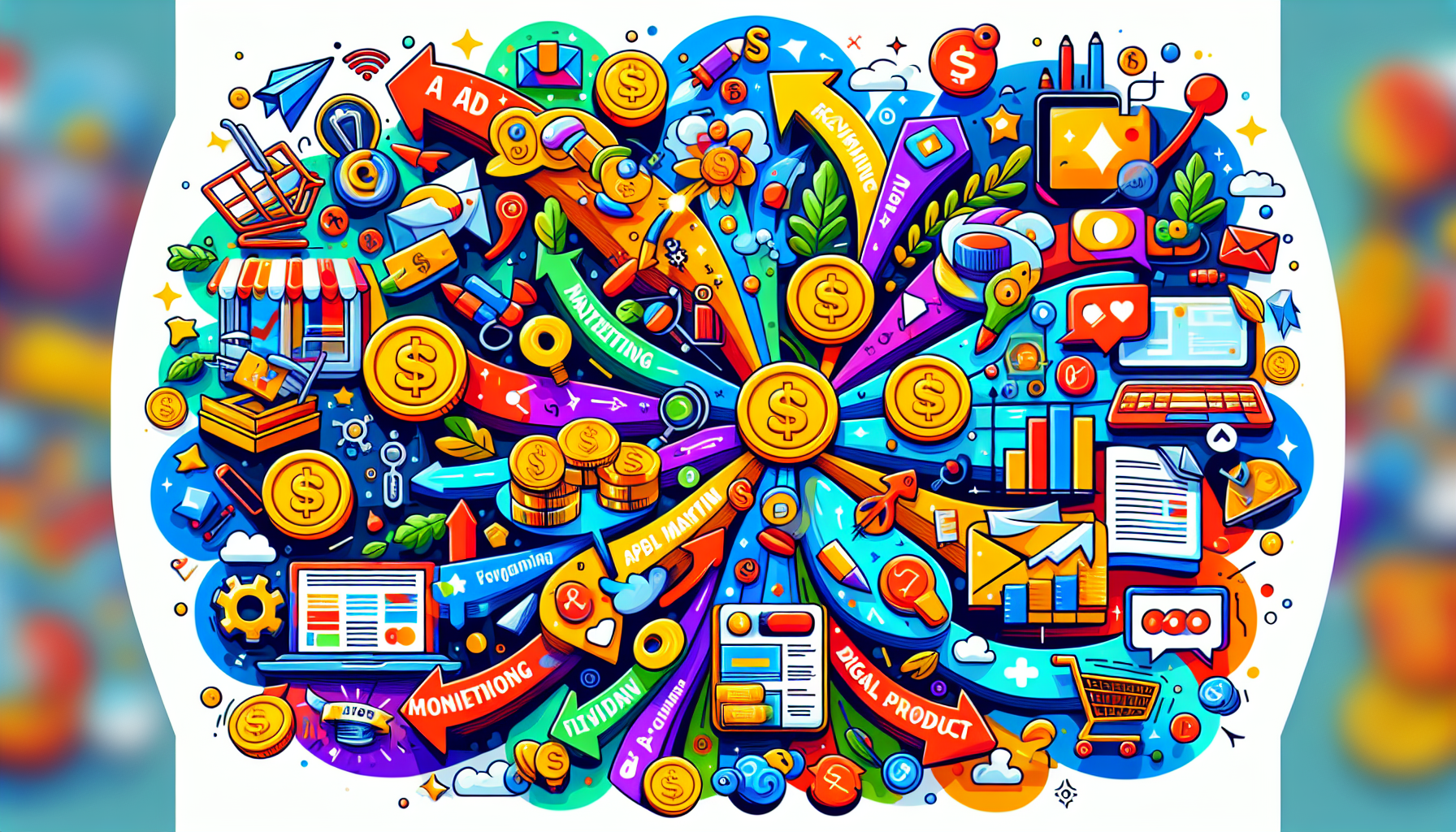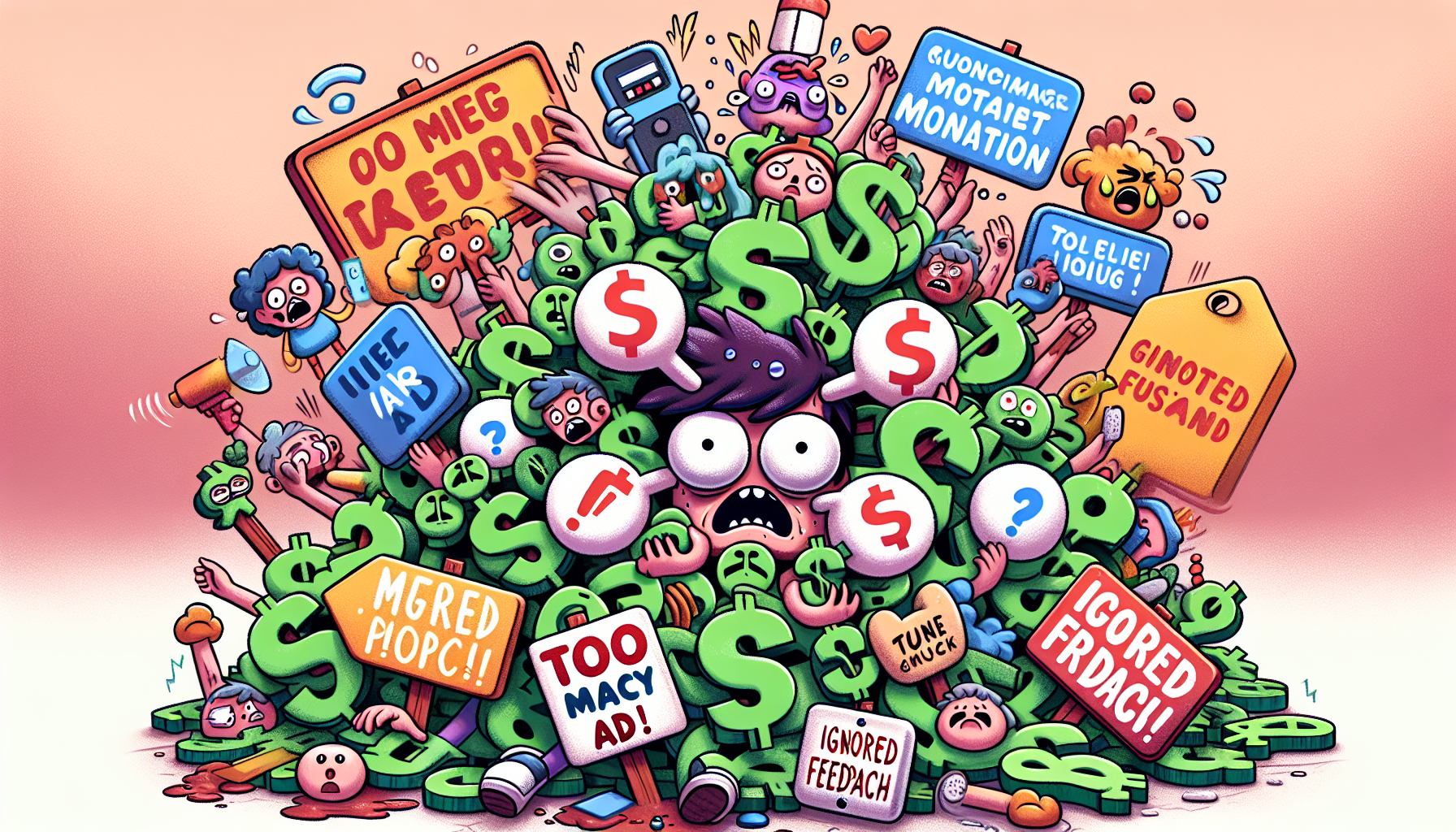
Top Strategies to Monetize Your Content Effectively
Want to monetize your content? This guide covers actionable strategies like ads, subscriptions, and affiliate marketing. Learn how to turn your digital content into steady income.
Key Takeaways
-
Content monetization is essential for creators to generate income and sustain high-quality production, leveraging methods like ads, subscriptions, and affiliate marketing.
-
Diversifying income streams and engaging with the community are key strategies for long-term success, as they provide financial stability and foster audience loyalty.
-
Understanding audience preferences and delivering high-quality content while maintaining transparency with monetization practices is crucial for building trust and maximizing revenue.
Understanding Content Monetization

In the digital age, content monetization has become a cornerstone for creators aiming to generate income from their work. Effective content monetization strategies enable creators to earn revenue from their digital content, supporting the ongoing production of high-quality material. This process is facilitated by seamless payment technologies and a growing recognition that quality content often comes at a cost.
Successful content monetization requires a blend of creativity and strategy. Strategic content monetization funds premium content production and fosters audience growth. High-quality content naturally attracts more viewers, leading to better monetization opportunities.
Understanding the intricacies of content monetization and identifying who pays for it is crucial.
What is Content Monetization?
Content monetization is the process of generating income from digital content. This can involve various methods such as:
-
advertising
-
subscriptions
-
affiliate marketing
-
community support
The core of content monetization lies in producing and distributing content to create content in a way that generates revenue. Every creator, from bloggers to video producers, can leverage these methods to build an audience and drive sales.
Different content monetization models include:
-
Ads, where creators sell audience access to advertisers
-
Subscriptions, where access to content is restricted until payment is made
-
Affiliate marketing, where creators earn commissions by promoting products
-
Selling digital products like ebooks
-
Offering exclusive content to subscribers
These methods not only help monetize content but also provide value to the audience, ensuring sustained engagement and profitability.
Who Pays for Content?
The primary payers for content are audiences, brands, and advertisers. Audience members who usually consume free content are willing to pay for premium content that offers added value. Brands and advertisers also play a significant role, often paying creators to feature their products or services.
Platforms like Facebook and YouTube facilitate these transactions, connecting creators with advertisers. Understanding who pays for content is crucial for developing an effective content monetization strategy.
Key Methods to Monetize Your Content

There are numerous ways to monetize content, each with its unique advantages. Common methods include ad revenue, affiliate marketing, selling digital products, online courses, subscriptions, brand deals, and donations. By diversifying their income streams, content creators can reduce vulnerability to market changes and enhance their revenue potential.
Let’s explore these methods in more detail.
Ad Revenue
Ad revenue is a straightforward method for content monetization. Platforms like Google AdSense allow creators to earn by displaying ads on their content. This can include product placements, links, or traditional ads. For instance, YouTube generates significant ad revenue through video ads, with creators earning through AdSense. Creators can also use pay-per-click (PPC) ads, where revenue is generated through clicks on displayed ads, leveraging an ad network.
However, while display ads can be a reliable source of income, they can sometimes disrupt the user experience. Therefore, it’s essential to balance ad placement to maintain audience engagement. Platforms like YouTube and Facebook offer various ad formats, allowing creators to choose the best fit for their content.
Affiliate Marketing
Affiliate marketing is another popular method where creators promote products through unique affiliate link and earn commissions on sales. This approach is appealing because it doesn’t require creating a product and offers low entry barriers. Successful affiliate marketers can generate consistent monthly revenue by sharing their recommendations across various platforms.
The effectiveness of affiliate marketing often depends on having a suitable niche and a scalable audience. Bloggers, influencers, and podcasters can all leverage affiliate marketing to earn commissions by promoting products that resonate with their audience.
Selling Digital Products
Selling digital products like ebooks, templates, and printables is a lucrative way to monetize content. These products require low overhead costs, allowing creators to maximize their profits. Additionally, existing content can be repurposed into digital products, providing additional revenue streams without significant extra effort.
Online Courses
Creating and selling online courses is a highly effective content monetization strategy. Courses can cover various subjects, from painting to business, offering deep value and learning opportunities to followers. Platforms that support online courses often provide additional resources like quizzes and assignments to enhance the learning experience.
Online courses can generate steady recurring revenue, as students enroll in an online course and continue accessing the content. High content quality and valuable lessons attract a dedicated audience willing to pay for expertise.
Subscriptions and Memberships
Subscriptions and memberships allow creators to generate recurring revenue by offering exclusive content to their audience. Platforms like Patreon facilitate this model, enabling creators to monetize their content through monthly subscriptions. Offering exclusive content like events, workshops, and subscriber-only posts enhances value for subscribers.
Engagement and community interaction are crucial for the success of subscription models. A dedicated and engaged community can lead to higher earnings, even with a smaller number of subscribers.
Brand Deals and Sponsorships
Brand deals and sponsorships are powerful monetization tools where creators partner with brands to promote products. These partnerships can take the form of product placements or sponsored content, with agreements often based on set fees or performance. Influencer marketing platforms help connect creators with brands, facilitating these partnerships.
However, creators might face challenges in maintaining content authenticity when working with sponsors. Balancing brand promotions with genuine content keeps the audience engaged and maintains trust.
Donations and Tips
Donations and tips offer a direct way for audiences to support their favorite creators financially. Platforms like Patreon and features like ‘Tips’ on TikTok enable followers to contribute. Creators can encourage donations by making it easy for followers to contribute, often through one-off payments or tips.
This method can provide a steady stream of support, helping creators continue producing valuable content.
Choosing the Right Content Monetization Platforms
Selecting the right content monetization platforms is crucial for maximizing revenue and reaching your audience effectively. Popular platforms include YouTube, Instagram, TikTok, Facebook, WordPress, Medium, Substack, and Teachable. Each platform offers unique features and monetization methods, making it essential to choose one that aligns with your content type and monetization strategy.
Creators often use multiple platforms to diversify their income streams and reach a broader audience. Tools like Patreon, Instagram, and Teachable provide various options for promoting and selling content, ensuring creators can find the best fit for their needs.
YouTube Partner Program
The YouTube Partner Program is a popular choice for video content creators. To qualify, creators need 1,000 subscribers and 4,000 viewing hours in the past 12 months. The program allows creators to generate income from various ad formats and channel memberships, offering exclusive content to supporters on their youtube channel.
Understanding audience demographics is crucial for tailoring content and maximizing engagement.
Social Media Platforms
Social media platforms like Instagram, TikTok, and Facebook offer built-in monetization features, including advertising revenue, subscriptions, and brand partnerships. Native ads, such as sponsored social media posts, blend seamlessly into the social media platform experience, enhancing audience engagement.
Tools like Facebook’s Brand Collabs Manager help connect influencers with brands, making it easier to find monetization opportunities.
Blogging Platforms
Blogging platforms like Medium and WordPress provide various monetization methods, including affiliate links, ads, and eCommerce stores. Medium operates on a subscription-based model, allowing writers to earn money based on the popularity of their posts.
These platforms offer flexibility and multiple revenue streams, making them attractive for writers and bloggers.
Newsletter Platforms
Newsletter platforms like Substack and ConvertKit enable creators to monetize their written content through subscriptions. Substack allows writers to offer both free and paid newsletters, providing an additional revenue stream.
These platforms are popular among journalists and creators looking to monetize their content through direct reader support.
Course Platforms
Course platforms like Thinkific and Teachable play a crucial role in content monetization by allowing creators to sell online courses and digital products. These platforms offer additional features like quizzes and assignments to enhance the learning experience.
These tools allow creators to offer valuable educational content and generate significant revenue.
Enhancing Content Quality for Better Monetization

Improving content quality is essential for attracting a larger audience and enhancing monetization opportunities. Understanding audience preferences and behaviors is crucial for effective content monetization strategies. Neglecting these insights can significantly harm engagement and monetization efforts.
Enhancing content creation quality involves understanding your audience, consistent posting, and creating content high-quality material.
Know Your Audience
Knowing your audience is vital for creating appealing content and promoting products effectively. Creators should understand their audience’s interests, reasons for following, and preferences to improve monetization.
Analyzing preferred post styles and frequencies helps creators understand which content resonates best with their audience, leading to better engagement and loyalty.
Consistent Posting
Consistency in posting helps maintain audience interest and growth. Regular updates foster audience loyalty and keep engagement levels high. Establishing a consistent posting schedule sets audience expectations and enhances retention, building a strong community connection.
Creating High-Quality Content
Creating high-quality content involves professional editing and production techniques, which significantly enhance the perceived quality of content. High-quality visuals and sound improve the viewing experience, making content more appealing to audiences.
Combining professional production techniques with high-quality aesthetics ensures that your content effectively captures and retains audience attention.
Common Mistakes to Avoid in Content Monetization

Avoiding common pitfalls is crucial for successful content monetization. Many newcomers overlook legal requirements, such as disclosing relationships with brands, which can lead to serious penalties. Additionally, failing to understand and cater to audience preferences, over-monetizing, and lacking transparency can significantly harm your content monetization efforts.
Exploring common mistakes and how to avoid them is essential.
Ignoring Audience Preferences
Ignoring audience preferences is a frequent mistake in content monetization. Creators who neglect their audience’s interests often see a decline in engagement and loyalty. It’s essential to engage meaningfully with your audience, rather than focusing solely on follower counts or likes.
Understanding what your audience values ensures sustained engagement and growth.
Over-Monetizing
Excessive monetization tactics can overwhelm your audience, leading to a drop in engagement. When users feel bombarded by monetization attempts, they may lose interest and trust.
It’s crucial to strike a balance between monetizing content and maintaining content quality to keep your audience engaged and loyal.
Lack of Transparency
Transparency is vital in maintaining trust with your audience. Failing to disclose sponsorships and partnerships can damage your credibility. Not being upfront about financial gains and partnerships can erode trust, making it essential to be clear and honest about your monetization methods.
Building a Sustainable Content Monetization Strategy

Creating a sustainable content monetization strategy involves growing an audience, engaging with your community, and diversifying income streams. Successful monetization relies on a mindful approach that prioritizes audience engagement and balances various monetization techniques.
Key strategies for building a sustainable content monetization plan include the following.
Diversifying Income Streams
Diversifying income streams is essential for financial stability. Relying on a single source of income can jeopardize your financial health; therefore, multiple revenue streams provide a safety net against market fluctuations.
Platforms like Teachable allow creators to monetize their knowledge through online courses, facilitating multiple income streams.
Leveraging Analytics
Analytics play a crucial role in optimizing monetization strategies. Analyzing audience engagement metrics helps creators identify trends and adjust strategies to enhance revenue potential. Monitoring these metrics helps in making informed decisions to maximize content performance and monetization.
Engaging with Your Community
Engaging with your community is critical for building a loyal audience. Claire Marshall, a successful freelance content creator, exemplifies how effective community engagement can lead to increased monetization opportunities. Real performance metrics, such as click-through rates and conversion rates, are valued more by marketing partners than likes or shares.
Building a strong community connection fosters loyalty and enhances monetization potential.
Summary
Content monetization offers numerous opportunities for creators to turn their passion into profit. By understanding the various monetization methods, choosing the right platforms, enhancing content quality, and avoiding common mistakes, creators can build a sustainable and profitable content monetization strategy. Remember, diversifying income streams, leveraging analytics, and engaging with your community are key to long-term success. Start implementing these strategies today and unlock the full potential of your content!
Frequently Asked Questions
What are the best platforms for content monetization?
To maximize your content monetization, focus on platforms like YouTube, Instagram, TikTok, and Substack, as they provide diverse opportunities tailored to various content styles. Embrace these platforms to unlock your earning potential and share your creativity with the world!
How can I start monetizing my content?
To successfully monetize your content, focus on a platform that suits your niche, engage with your audience, and explore options like ad revenue, affiliate marketing, or selling digital products. With the right strategy, you can turn your passion into profit!
What are common mistakes to avoid in content monetization?
To succeed in content monetization, avoid ignoring your audience’s preferences, over-monetizing your content, and lacking transparency. These pitfalls can diminish engagement and trust, so stay connected with your audience for better results!
How important is content quality in monetization?
Content quality is vital for successful monetization, as it not only attracts but also retains your audience. Focus on delivering valuable content to maximize your earning potential!
Why should I diversify my income streams?
Diversifying your income streams is essential for financial stability as it protects you from market fluctuations and specific risks. Embrace this strategy to build a stronger, more resilient financial future!
Are you interested in finding out more? Browse the rest of our blog for other marketing tips. If you’re ready to create your first email, survey, sign-up form, or landing page then register for a free trial to get the tools you need to build powerful marketing campaigns!
© 2024, VerticalResponse. All rights reserved.



